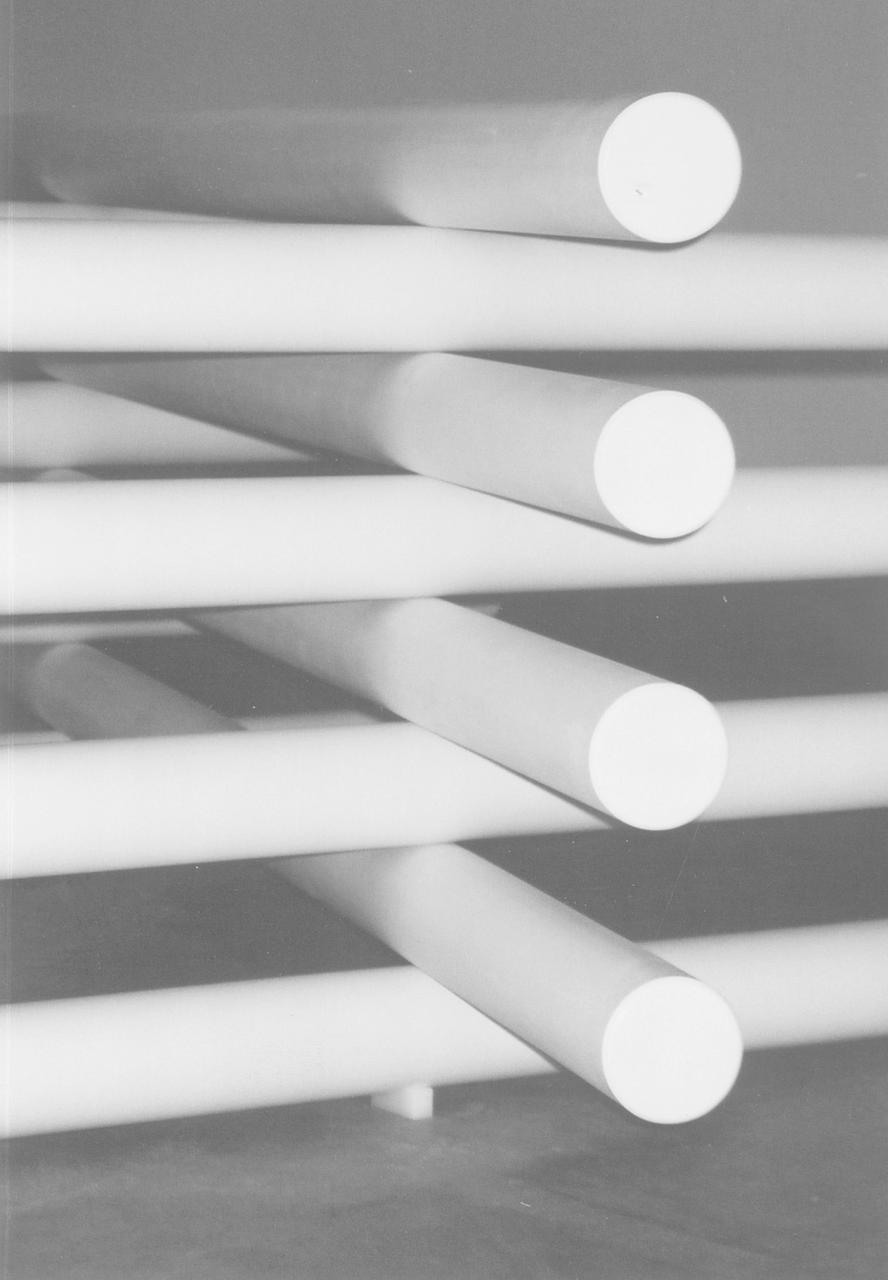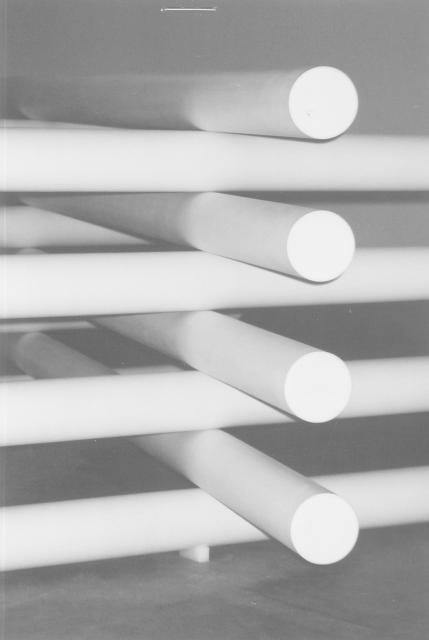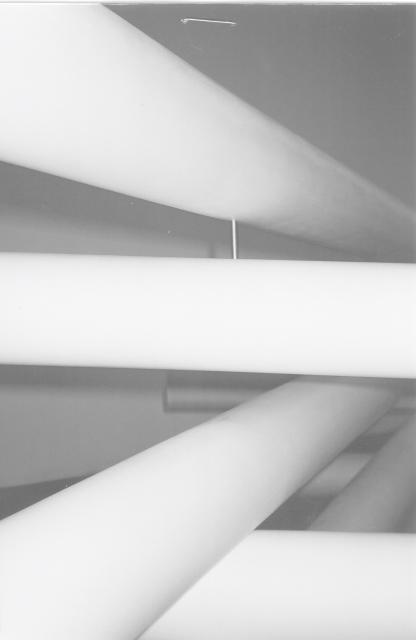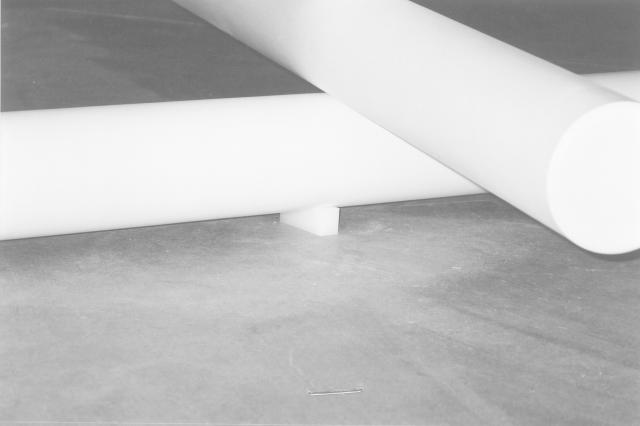
Exhibition
23 Nov 2003 - 17 Jan 2004
Illingworth Kerr GalleryAppendix A: The Detour
Paul Jackson
Artist Statement:
The contemporary saturation of images in our culture produces within many an uncritical comfort with transparent representation. Image motifs have become aligned with specific social meanings and collective discursive reactions. We are exposed to so many images that a sense of familiarity and normalcy subsumes a responsibility for critical investigation. The image and its context are expected to answer questions, rather than question the assumptions and surrounding answers suggested by hegemonic representational discourses.
In my current work, I engage specific and identifiable image types – the pastoral, the cityscape, 3-dimensional sculptural minimalism, photographic realism and nature photography - in unpredictable ways to create strategies of contextual re-presentation. Through multiple dialogues between the photographs and the sculptures, form and context, colour and mood, materials and formal aesthetic relationships (colour, frame, scale, touch), the onus of constructing and questioning multiple meanings is demanded of the viewer. Re-presenting identifiable imagistic discourses asks the viewer to hold on to a form of recognition while it stretches the shape of subjective expectation and perception. Yet the work refuses, in its formal distancing and masking of human involvement, to re-enforce any one interpretation.
The formal qualities of the photographic and 30 sculptural work draw the viewer in for closer examination. This is due to their physical construction and presentation within a conventional gallery context as near technically perfect (that is, devoid of 'painterly touch'), and undeniably aesthetic objects. It is this aesthetic and physical attraction to form and presentation that stimulates in the viewer a response to an interpretive process regarding the representational subtleties of the images. The simplicity and subtlety of form, sign and referent attract, simultaneously resisting totalization in their ambiguity and aesthetically untouchable presence. Upon close inspection, small imperfections in technical aspects of the photographs such as blurriness, dust motes and varying clarities, reveal themselves. These muted but deliberate blemishes challenge the viewer to view the work not simply in the technical terms of the tradition of the photographic medium. Rather, we are re-directed to the evocative power of what is presented in relation with the accompanying works (3-D forms, adjacent photographs, frames, materials, placement within the gallery, etc.).
Thus, the photographs and sculptural forms are not simply presented as snapshots. Rather, they are selected as works whose scale and installation are intended to reflect historical, formal and materialist dialogues. For instance, the colours and the scale of the imagery presented, (sky vs. ground, foreground vs. background, paths, pastures, dwellings) reference and play upon historical paintings and drawings such as those of the Dutch landscape painters.
The sense of the familiar (path, mound, fields, pasture, distant dwellings, fences) all indicate the inexorable trace or scar of the human. The images are deliberate in their paring away of all but the most subtle of cues so as to evoke the absence of human form, yet also preserve its presence in the trace. Feelings of melancholy or despair are evoked. Paths lead to an indeterminate end. Trees disappear into fog. An unfinished structure is presented: a house, or the merest form of a house, now abandoned? A figure of an animal is barely perceptible in the vast expanse of the sky and a refusal to reveal. However the responsibility to face hope, its absence, or its ambiguous presence, is pressed back onto the viewer via a redemption attainable only through the experience of despair and loss. The dialogue between the pieces invites possible narratives and openings, but never presumes a transparent conclusion.
The large sculpture, structural/enclosure, evokes an ambiguous or unfinished work or labor: a fence, or perhaps a dwelling? The composition is pared to the subtlest forms of dwelling, though the materials offer themselves as some of the most sophisticated of technologies. Readings could reference past or abandoned human involvement, as they also presage the ambiguous tensions of modernity.
A gesture of unfinished or incomplete labor is present as well in 28 rods in armory gray, yet no sign of an intended use is provided. The formal purity and minimalism of the pile evoke an expectant, instrumental passivity, formally cueing narratives of industry, technology, appropriation. Indications of their past or intended use are implied in their naming, yet no conclusion can be reached. Placed in conjunction with the photographs entitled long low mound, the presence of the rods mirrors the shape of the mound, opening to the viewer combinations of objects and images, thereby transiting multiple and ambiguous experiences of loss, recollection and expectation. Similarly, links to cosmopolitan and consumptive expansion are indicated by the images of planes.
Directing the viewer towards a vision of the common by drawing upon the evocative image of place and conjoining these formally and materially with elements of the artificial, results in work oscillating between document and fantasy, memory and expectation, loss and security, home and the world, fiction and document. Inscribed by a form of ir-reality, the cumulative presentation contains an ambiguous allusion to something else, an evocative presence of the unknown. Recognizable links are formed and deconstructed, traced and erased, intimated and distanced. The work attempts a "formal process of condensation and irruption of the familiar ... the dropping of visual symbols, metaphor, allegories, of composing an image that leaves {the viewer} with a sense of narrative"* yet ones which open the ambiguity of the question.
Paul Jackson graduated from ACAD with a diploma (with distinction) in sculpture in 1995 and subsequently a BFA awarded in 2003. He currently lives and works in London, England.
Curated by Ron Moppett
* Ewa Lajer-Burcharth, "A Stranger Within: Tracy Moffat" Parkett 53:1998 p.43


